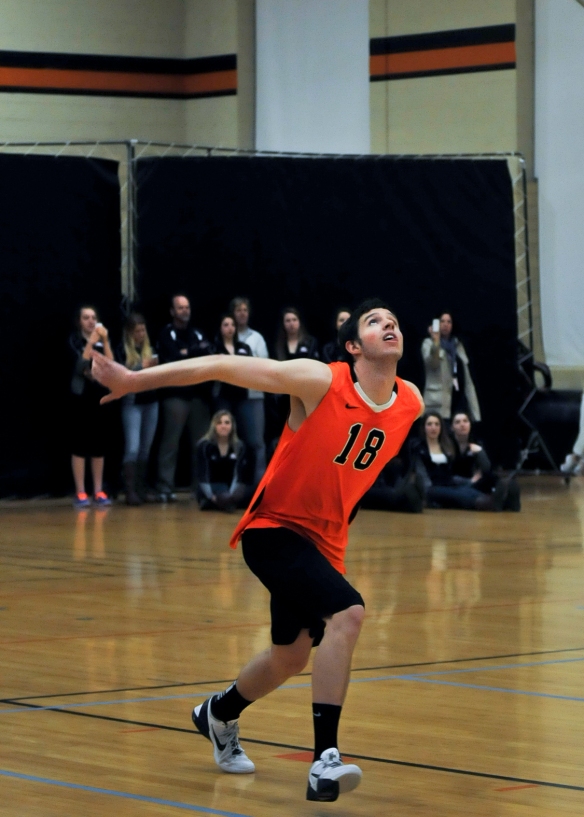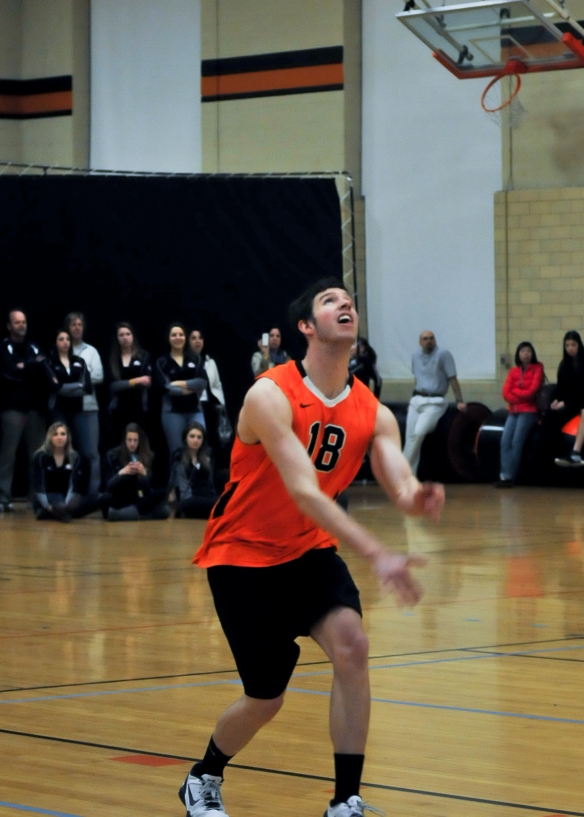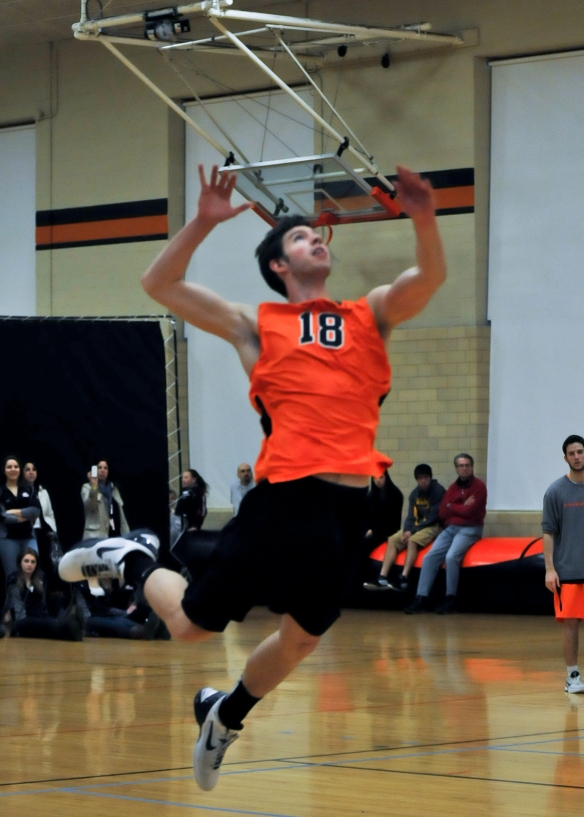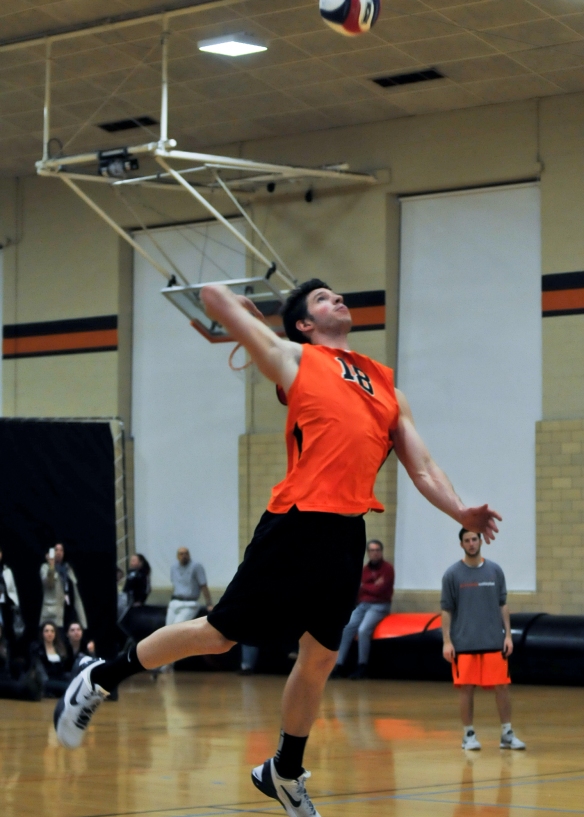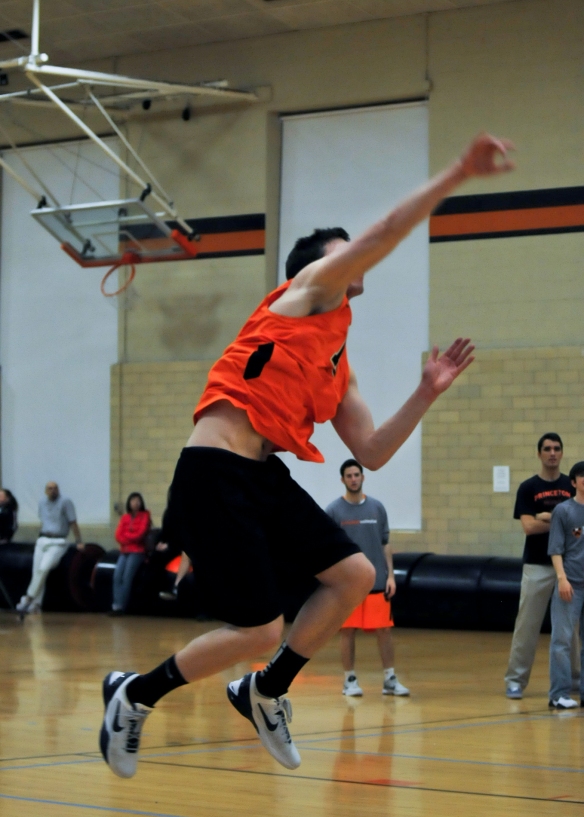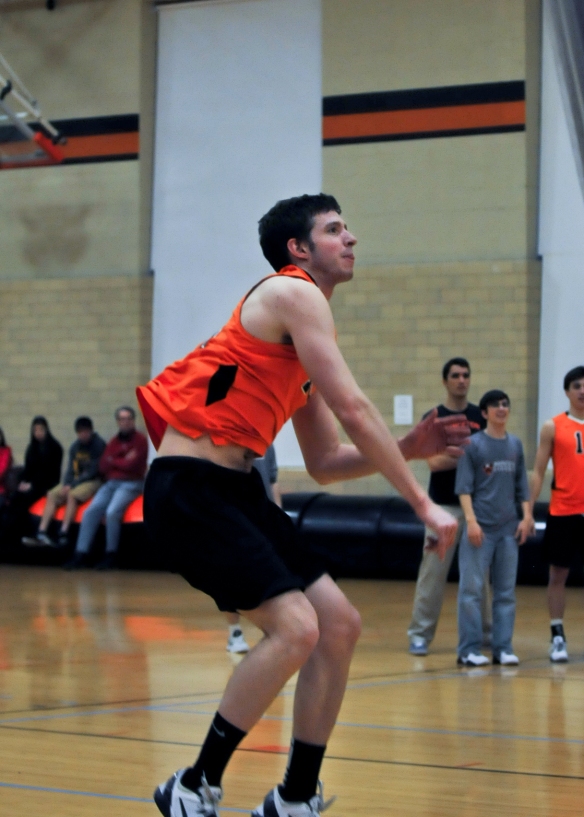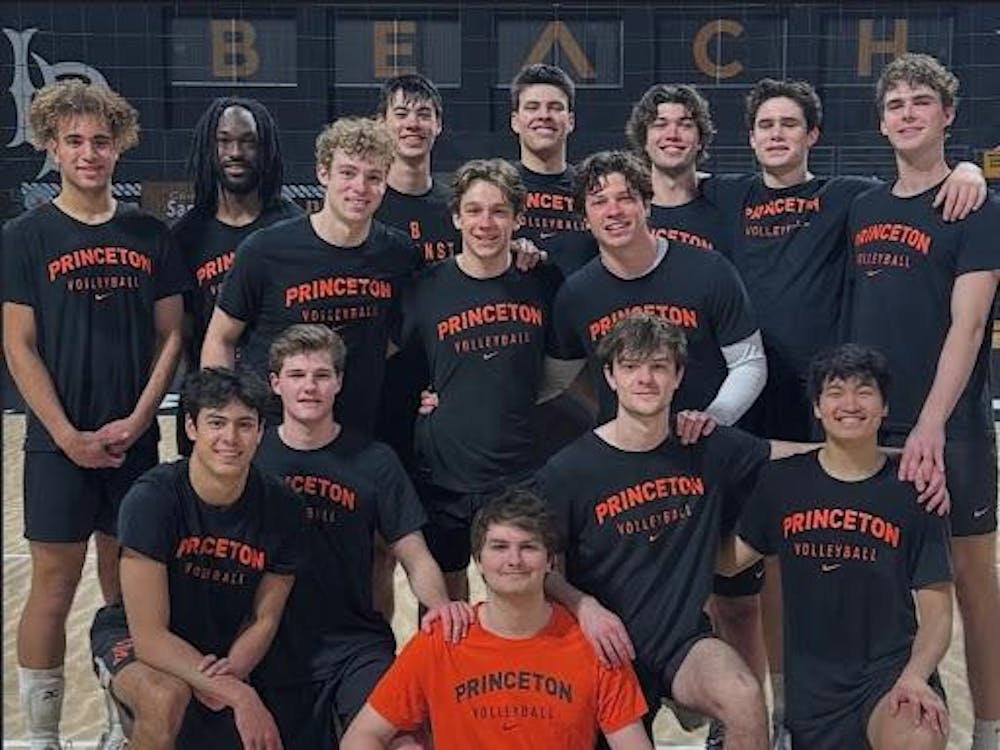By VICTORIA MAJCHRZAK
Photos byAleka Gurel
The serve is everything in volleyball. Do it right, and you can set your team on a serving run that can build a dominating lead or dig yourself out of a deficit. Do it wrong and you can throw away the game.
Six members of the Princeton men’s volleyball team rank within the EIVA’s top 50 players in service aces per set, with junior outside hitter Pat Schwagler leading the Tiger pack at No. 2 with 0.37. Schwagler is joined on the list by middle blockers sophomore Will Siroky and senior Michael Dye, sophomore outside hitter Cody Kessel and outside hitters senior Daniel Tien and freshman Devin Stearns.
Siroky, sitting at No. 9 with 0.24 service aces per set, explained how to hit the perfect serve.
He begins by tossing the ball out in front of him and having it spin back toward him — three times over.
“I exhale slowly through this first part,” Siroky said. “I recently added this because the refs take too long to blow their whistle sometimes, and I don't like standing back there doing nothing.”
Next Siroky gets set. He has a well-established procedure for doing so:
“Next, I position my right foot slightly forward and bounce the ball three times with two hands and spin in it my right hand and exhale as it spins in my hand,” he says. “At this point, I look up to check which passers are where and decide which seam I'm going to aim at.”
“I repeat this process, and look at my shoes during the second three ball bounces - which I do with my right hand while putting my weight forward on my right foot and I wipe my left hand on my shorts - and go through a personal and superstitious thought process..... and then I exhale again as I spin the ball in my hand the second time and lean back. Then, I fully extend my arm down near my knee.”
After repeating this process, looking at his shoes during the second three bounces and putting his weight forward on his right foot, Siroky wipes his left hand on his shorts and goes through “a personal and superstitious thought process.” After breathing out and spinning the ball again, he leans back, extends his arm, and takes aim.
“I aim for a spot about a foot to my right and 5-7 feet into the court with my toss,” he says. “The approach is four steps — the first step (right foot) happens at the same time as the toss and is small. The second step is slightly bigger and a bit quicker (if the toss is right — this step is a timing step) and the last two steps are more of a hop step and are suppose to be explosive. Again, if the toss is right, my shoulders should face the side wall and then as I torque through the ball, my shoulders rotate to face the other wall and I land with shoulders facing the other wall.”
Though he is meticulous every step of the way, the toss is the crux of the serve.
“It’s all in the toss,” Siroky says. “If you toss it too far to the left or too low, you’re definitely not going to get a good serve ... Too far to the right or too high is ok — if it’s too high then you just slow down your movement and jump.”
As you might imagine, it takes a lot of practice to get something with this many steps down to a science. To practice, Will puts a card one foot to his right and about 7 feet ahead of him on the ground, tossing the ball and seeing how many times it lands on the card.
But the rituals don’t stop after the serve is over.
“If I hit my first serve well I usually sing a song in my head to keep me in rhythm,” Siroky says.
So far, and largely thanks to Siroky, the Tigers are looking good. They have clinched a playoff spot, but the EIVA championship is anyone’s for the taking. One thing is certain: it’s a toss up.




